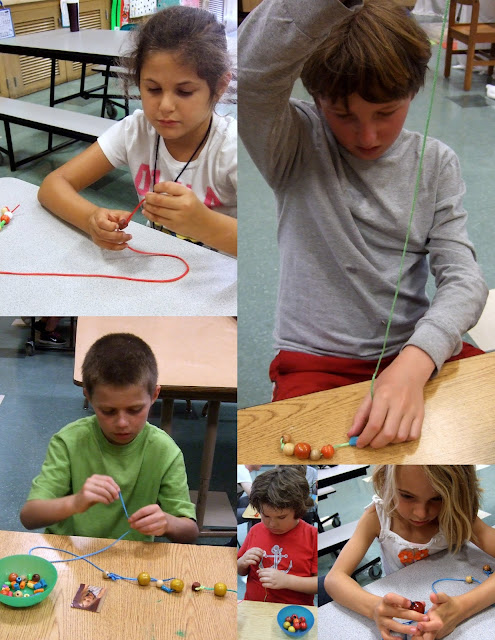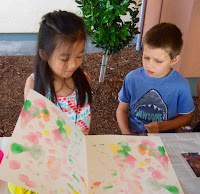We were super excited today since new students joined our camp. We right away practice our friendship skills and explained to our new friends the systems and the schedule we have in place at camp.
Very important are our
friendship points. We earn those for following our camp rules (e.g., using kind words, listening to adults and friends, having a calm body and keeping our hands to ourselves). We also receive friendship points for being kind, helping other campers, cheering for our friends, etc. We need to have earned at least 6 friendship points at the end of the day and then can trade in the points for a prize. Of course, we can earn more than 6 friendship points. At the end of each camp day, we count how many the whole group received. Our record is 99 friendship points!!!
 |
| Our friendship point necklaces. |
Here is our camp schedule:
- Arrival and free play
- Opening circle, roll call and greeting ritual
- Cooperative art/science/sensory or cooking project
- Music/dancing game
- Snack
- Cooperative outdoor game such as obstacle courses, relays, treasure hunts
- Playground time
- Turn taking game with focus on practicing good sportsmanship
- Lunch
- Quiet time: painting to classical music
- Favorites/dislikes: Reviewing the day
- Movement game: following directions
- Closing ritual: friendship handshake, friendship points, prize box



























